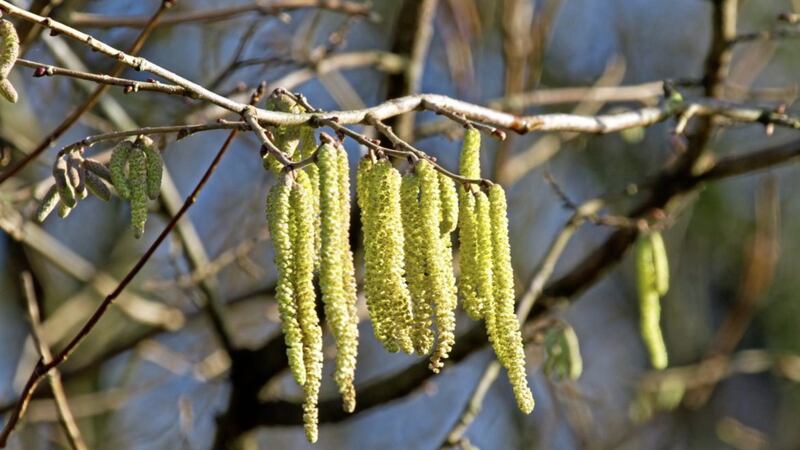NOTHING says it’s spring quite like sipping coffee at pavement café while sitting shivering inside a quilted jacket – only for a 20-something beefcake in shorts, T-shirt, tats and sunglasses to stroll past smiling smugly. Yes, the season of rebirth is upon us, meaning we can now have some proper wintry weather and more daylight hours to get caught in a sleety squall. There will of course be days of bright, warm weather – I hope – but any notion that Baltic temperatures are banished with the vernal equinox is bunkum.
Yet rain, hail or shine, spring’s stars are appearing, many announcing their arrival in the brightest, most vivid colours, whether it’s the golden yellow of the ‘King Alfred’ daffodils or the dazzling scarlet of ‘Sky High’ tulips. But also cast your eye upwards and look closely to see a less showy spring star that has emerged along the branches of trees.
Catkins may not have the wow factor of cherry blossom or the exotic allure of magnolia but these dainty, unobtrusive flowers – yes, they are flowers – are as vital in their own understated way as any elaborate rose or lily.
The word ‘catkin’ comes from Middle Dutch meaning ‘kitten’, in reference to the hanging, cat’s tail-like appearance of the spikes. Much to the annoyance of hay fever sufferers, the catkin – or ament – distributes and receives pollen carried on blustery spring breezes. Often only the male flowers form catkins, while the female flower will take another form, as happens with hazels and oaks. The catkin is an example of what’s known as convergent evolution, where the same feature develops in species independently of each other and at different times. This same reproductive mechanism developed in the Fagales family (oaks, hazel,) and later in the Salicaceae (willow) family, without cross pollination.
Birch and alder (of the Betulaceae family) are other native trees that use these slender flowers to reproduce. Hornbeam’s pale-green catkins too are regarded among the finest, yet are rarely seen because closely clipped formal hedging plants and catkins don’t go. You’ll find plenty of varieties cultivated from these families that also produce catkins – though if not sterile, they are unlikely to come true. For the best displays, your trees need to be given lots of space to spread their branches but also cover from strong winds that’ll rob them of their unique selling point.
My personal favourite, and a small tree that produces catkins at eye level, is Corylus avellana ‘Contorta’, the twisted hazel. A tree that can only really work as a specimen in full sun due to its habit, this half-weeping corkscrew hazel is currently adorned with reddish catkins. Corylus maxima ‘Purpurea’ is another great, multi-stemmed, purple-leaved hazel that produces delectable plum red spikes. The weeping birch Betula pendula ‘Tristis’ bears brown catkins that dangle in a manner that exaggerates the trees weeping habit – again another one for full sun only, where it’ll reach around 7-8m over 20 years.
The willow’s catkins are different in appearance but work on the same principle. The catkins of the weeping Salix irrorata’s have been described as ‘chameleon-like’ as they emerge grey coloured before morphing through vibrant red and yellow. And all this against the deep-aubergine bark. Another with young shoots of dark, textured bark is Salix daphnoides aka violet willow, which produces silky, grey catkins.








